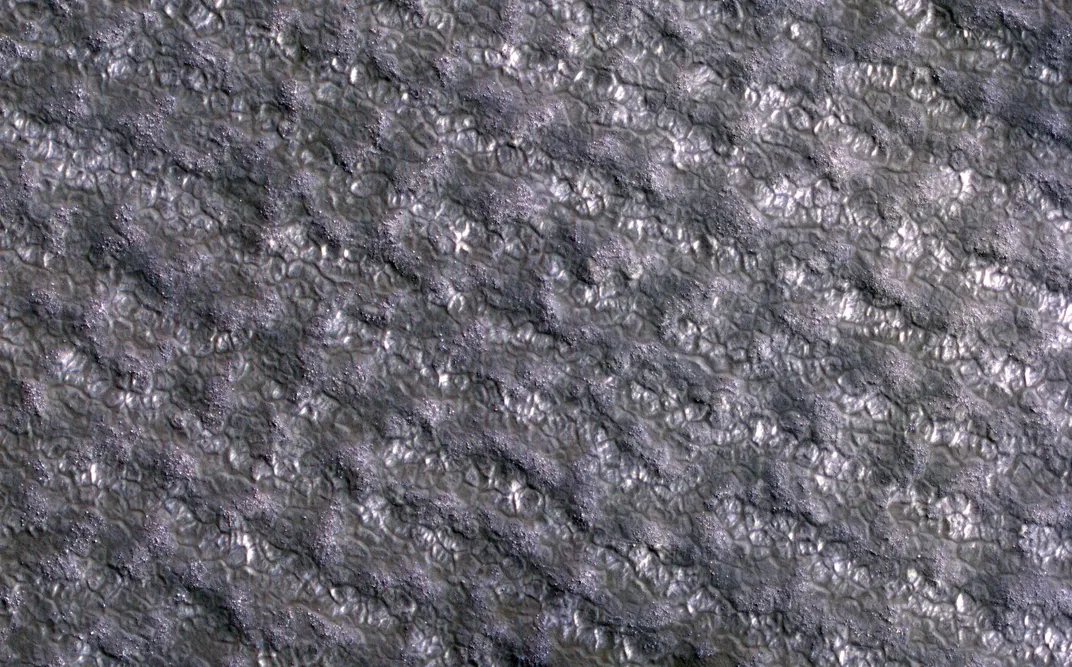Striking Mars Image Shows Strange Boulder Piles and Undulating Sand Dunes
Though the image looks otherworldly, the likely processes behind these oddities also happen on Earth
/https://tf-cmsv2-smithsonianmag-media.s3.amazonaws.com/filer/c6/5e/c65eeea8-94ac-4847-bf41-7ce1f2ff0ad0/mars_nasa_boulder.jpg)
The strange features on the surface of Mars never disappoint. And last week the Mars Reconnaissance Orbiter (MRO) captured another otherworldly sight: undulating sand dunes and piles of boulders. As Amanda Kooser reports for CNET, though both of these features can be found on Earth, the pattern and repetition of the tableau in the far North of the Martian landscape is arresting.
The MRO captured the image while tracking the shifts of sand dunes near Mars’ North Pole whirling along about 200 miles above the Martian surface, Mike Wall writes for Space.com. The dark, curved sand dunes are immediately evident, but as Kooser writes, it's the pattern of the speckled region between the dunes that intrigued scientists.
When magnified, the region displays prominent angled parallel stripes that alternate dark and light. And between the stripes lie neatly organized piles of boulders at regular distances.

So what does the pattern mean?
Researchers believe it might have something to do with a phenomenon called “frost heave.” During this process, cyclical freezing and thawing causes water in the soil to expand and contract, which can result in piles like the ones spotted on Mars.
At least that’s the way frost-heave processes work on Earth, where this cycle of temperature changes can take about a year. Scientists still haven't sorted out how exactly the patterns form, but the process can result in a range of surface features—from the hummocky landscapes of Iceland to regular circular patterns in Svalbard. And the effects can be quite strong. As Kooser reports, frost heave is capable of moving even roads and buildings.
According to a NASA press release, the Martian process could be a result of the changes in the planet's orbit around the Sun, which takes around 687 Earth days.
Decades ago, researchers didn't believe frost heaving could happen on Mars. But over the years, researchers have learned that not only can it happen, but the features are actually quite common on this far-flung world. Then, in 2008, the Pheonix rover actually landed in an area of repetitive patterns left from frost-heave action.
The MRO arrived to Mars in March 2006, after launching the previous summer. Since then, it has looked for signs of water activity and possible locations for future missions, Wall reports. It's also allowed NASA to study the many processes that shape Mars' landscape. And this latest image is no different, displaying the fascinating results of repetitive freezing and thawing.